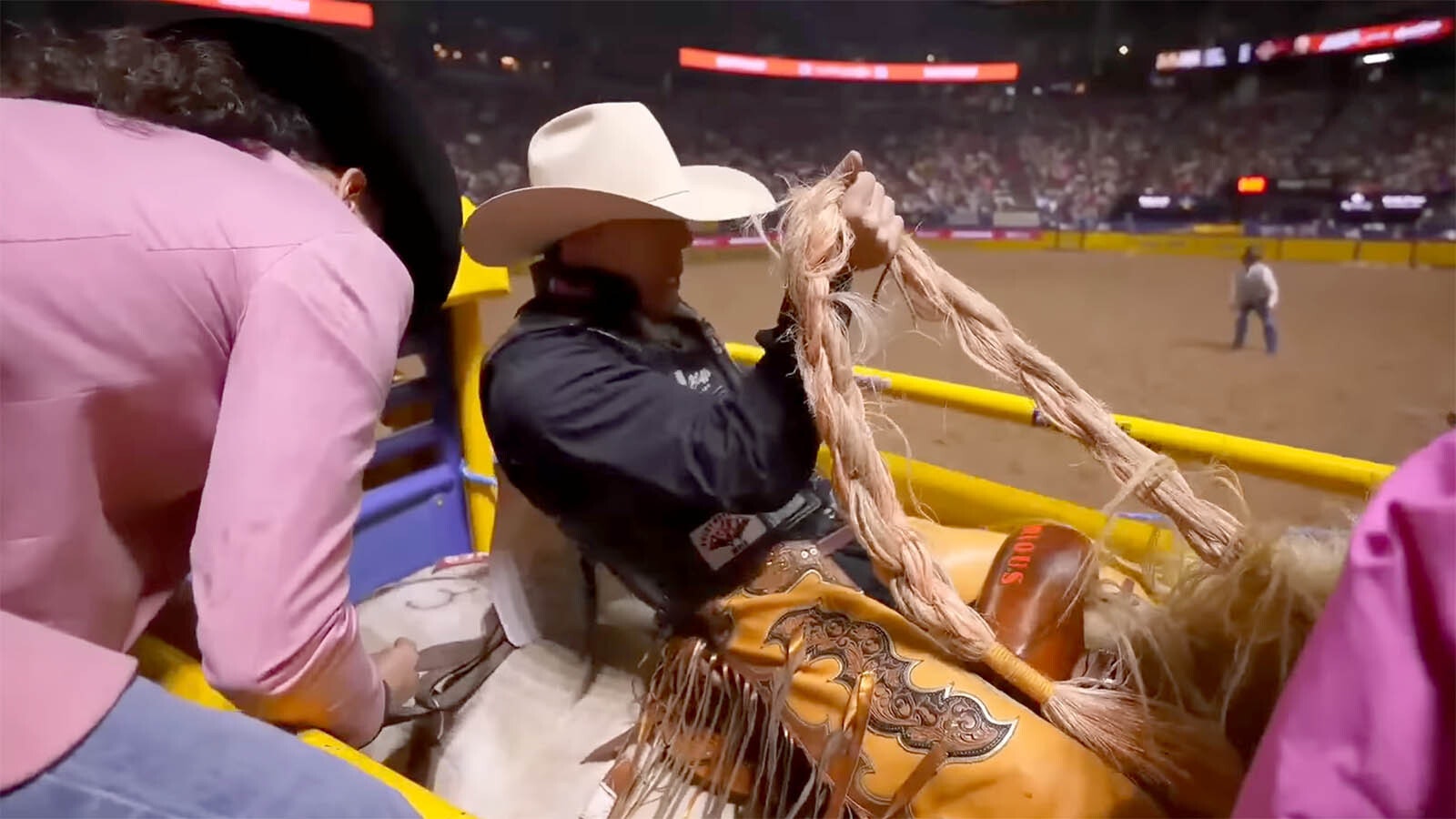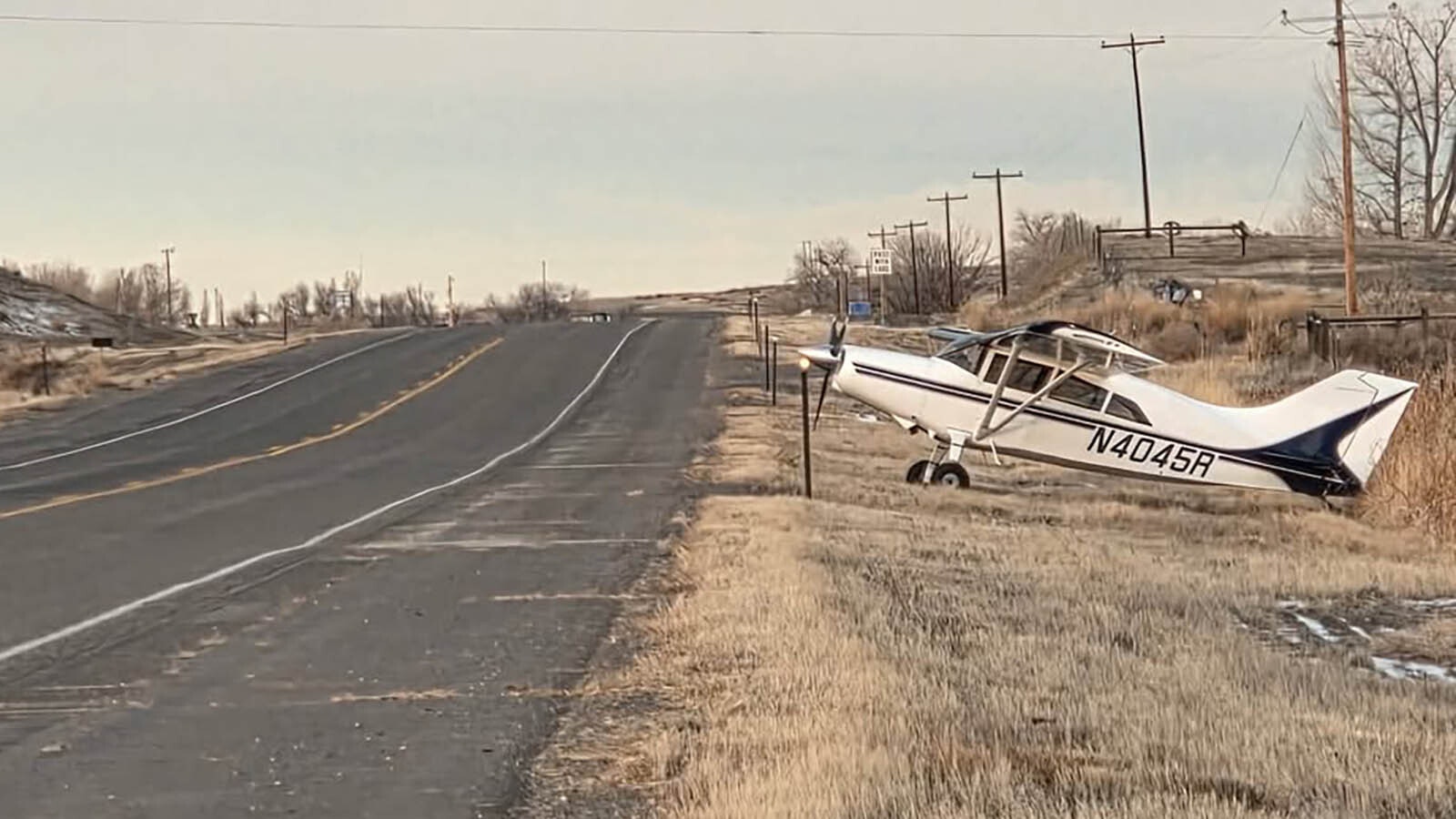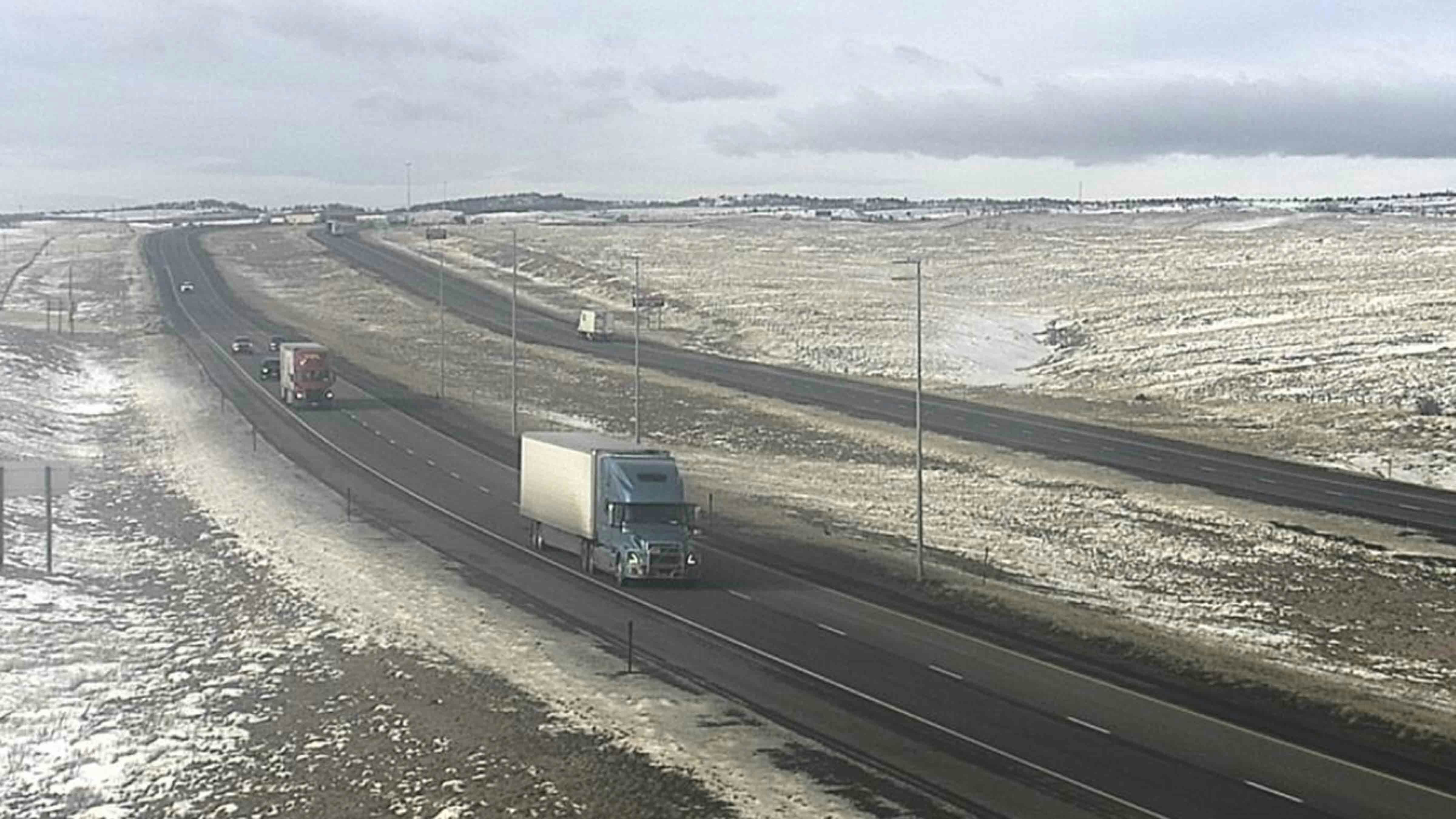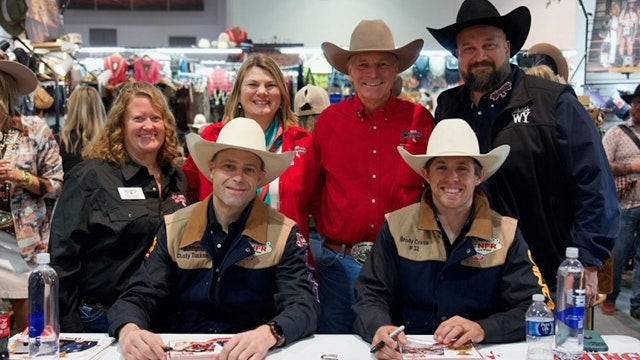Scientists around the world are eyeing what they describe as a newly designated "mummy zone," where exceptionally preserved bodies are revealing extraordinary insights into the past.
It's not in Egypt. It's actually just outside Lusk, Wyoming.
And these mummies aren’t ancient people or pharaohs.
The “mummy zone” has produced two prehistoric mummies from Lusk that are the subject of new research published by a team of paleontologists from the University of Chicago.
The 67-million-year-old fossils, complete with soft tissue preservation, have fleshed out dinosaurs in an unprecedented way.
Paul Sereno, the lead author of the new research, found the Edmontosaurus mummies in 2000 and has found new dinosaurs all over the world.
Now Sereno is itching to get back to Lusk to see what beautiful things are waiting to be unearthed.
"This is the first big dinosaur that we know what it really looked like," Sereno told Cowboy State Daily about the impact of finding the mummies. "We know Edmontosaurus from head to toe. It's very exciting."
And what is Edmontosaurus from head to toe? A partially bipedal reptile with fleshly spikes and hooves.
The discovery of these preserved specimens has paleontologists also excited for the possibility that the “mummy zone” could reveal a perfectly preserved Tyrannosaurus rex or Triceratops.

Beautiful Corpses
Sereno and his team did an exhaustive study of two Edmontosaurus mummies found in the Late Cretaceous Lance Formation in 2000. He excavated them with a crew of Chicago students for an unforgettable experience.
"I was thinking of where I could take a group of Chicago kids to experience and understand my discipline of paleontology," he said. "I thought Wyoming."
The fossilized skeletons they found were better than perfect.
When the dinosaurs died, they underwent a posthumous spa treatment that kept their skin glowing for 67 million years.
"They underwent a series of special circumstances that rapidly buried the carcasses," Sereno said. "When the dinosaur was buried, a bacterial film covered the dinosaur as it began to decay underground.
"Surrounded by fresh sand and mud, a little bit of the mud gets attracted by this film of bacteria to the surface of the decaying carcass."
Sereno said this "clay mask" isn't too different from the clay masks many people use for various skin treatments. It's a beautification technique that beautifully preserved these dinosaurs.
"The face disappears, and the skull is preserved below, but between them is a small gap only a 100th of an inch thick, that preserves an incredibly fragile film of what the skin looked like,” he said. "It's a process that is not completely unlike what was done with Egyptian mummies."
Sereno and his team found more than a pretty face.
The thin film preserved the texture and structure of the dinosaur's skin, covering the entire length of both specimens, from the front of their duckbills to the tips of their tails.
"It's the first big dinosaur that we can confidently say we know what it looks like," he said.

A Spiky, Hooved Reptile
So, what did Edmontosaurus look like? Fleshy, spiky, and utterly bizarre.
The first thing Sereno noted was the "big fleshy crest" that ran along the entire back of the dinosaurs. The only living animal with similar features is the Doria's angle-headed lizard from Borneo.
"It looks like a lizard crest that breaks into interdigitating spikes running along the back," he said. "We'd never seen that in Edmontosaurus before."
These fossils have historically been called "skin impressions." Sereno and his team opted to call these "skin renderings," since they aren't literal impressions of the skin in the prehistoric mud that hardened into rock.
What was even more surprising were the tips of their toes. Rather than having fleshy toes or claws, the back feet of Edmontosaurus were hooved.
A hooved dinosaur? Sereno was surprised as anyone.
"We never thought of a reptile with a hoof, but seeing is believing," he said. "Wyomingites know horses, so they can relate to this.
"There's the horse hoof that you put a horseshoe on, and the soft center called the frog. This dinosaur had the same structure. A hard hoof with a soft center. It's unbelievable and pretty spectacular."
This discovery indicates reptiles evolved hooved feet long before mammals.
Sereno also noted that it might be the first time that hooves have been associated with a partially bipedal animal, and an immensely large one at that.
"Edmontosaurus is a four-legged animal, but only at slow speeds," he said. "At higher speeds, it would be walking or running on its hooves.
"Hooves are mainly for (quadrupedal) animals to walk efficiently on land, but we never thought of a two-legged animal having them."

Past Is Prologue
Dinosaur mummies are among the crown jewels from the earliest days of paleontological exploration in Wyoming.
The first dinosaur mummy ever found, an Edmontosaurus, was discovered by paleontologist Charles Sternberg near Lusk in 1908.
It's one of the most prized specimens on display at the American Museum of Natural History in New York, New York.
In 1910, Sternberg went back to the same spot and found another dinosaur mummy, also an Edmontosaurus. It was acquired by the Naturmuseum Senckenberg in Frankfurt, Germany.
That special spot is located on the Zerbst Ranch, first settled in the 1890s and still owned and managed by the Zerbst family after five generations.
Sereno used some historical detective work to rediscover this spot, where he found one of the two dinosaur mummies described in the paper.
"One of the most thrilling things I found was a letter from Charles Sternberg describing where he found the first dinosaur mummy in 1908," he said. "He was describing distances from Warren, but I went through all the best maps and couldn't find Warren."
Sereno kept sleuthing by asking the Zerbsts and their neighbors if they knew anything about Warren, Wyoming.
One of those ranchers said her great-grandmother was the postmaster of Warren and could show them where to find the long-lost spot.
"We ended up finding the foundation of the post office," he said. "It was the actual post office Sternberg was talking about, using horse-drawn carriages to collect the first mummy."
Following these clues, Sereno rediscovered one of the most legendary spots in paleontological history: the "mummy zone."

The Mummy Zone
Finding several immaculate dinosaur mummies from the same spot isn't a coincidence.
The exposures of the Late Cretaceous Lance Formation near Lusk are among the best and most unique in the Western United States.
The last days of the dinosaurs are preserved in two well-known Late Cretaceous rock formations: the Lance and Hell Creek formations.
Both are widespread throughout the Western states, but Sereno said Lusk's Lance exposures might be the best of the lot.
"The Lance Formation is a classic sandstone that's about 500 feet thick, plus or minus 100 feet, in Montana, South Dakota, North Dakota, and all of Wyoming up to Gillette," he said. "And as you come down from Newcastle and go south, the formation goes from 300 feet thick to 1,000 feet thick before it disappears against the mountains, right under the mummy zone."
Sereno said the thickness of the layer is crucial for the preservation of dinosaur mummies. Once they were buried, they were untouched even as the landscape above them dramatically changed.
"What was happening is the bottom was falling out on this shoreline for bigger geologic reasons," he said. "What happens a lot of times with fossils is that they get covered up, but then they get exposed and moved again and again and again until they're destroyed.
"But with the shoreline of these rivers bottoming out, these dinosaur carcasses were covered, never to be touched again."
After these Edmontosaurus specimens were pristinely buried with their "clay mask" covering, they remained unexposed and undisturbed beneath the complex terrain of eastern Wyoming.
Even when rivers ebbed and flowed in the ensuing 67 million years, they never reached deep enough to disturb the dinosaurs.
Sereno was able to determine the depth of this discovery thanks to the isolated oil rigs dotting the landscape around Lusk.
As wells were drilled, on-site geologists recorded the depths and thicknesses of the layers they penetrated, including the underlying Lance Formation.
"It's not ideal ranch land, but paleontologists were attracted to it because of the ravines," he said. "My bet was that the terrain was complicated enough that, just maybe, there was something in those ravines. And sure enough, there was."
Sereno's research mapped the extent of the "mummy zone." All of the famous Edmontosaurus mummies and exceptional specimens of other Late Cretaceous dinosaurs were excavated within the same general area.
"That's why there are so many dinosaur mummies in the space of six miles," he said.
Best Of The Last
More mummies have been found in "the mummy zone" near Lusk. The same area produced a partial articulated Tyrannosaurus skeleton and "Lane," a large Triceratops with extensive skin renderings.
Sereno is confident that there's much more to be discovered in the "mummy zone" ravines near Lusk. Edmontosaurus is so common because it was one of the most common herbivorous dinosaurs at the end of the Late Cretaceous.
"It was the buffalo at the end of the dinosaur era," he said. "They roamed around in herds, literally in the same way the buffalo were running around in the 19th Century, and T.rex was its nemesis."
If the "mummy zone" contains so many perfectly preserved Edmontosaurus specimens, could a just-as-perfect T. rex or Triceratops be waiting in one of those ravines? Sereno likes the odds.
"You've named the two that we're most interested in," he said.
Sereno said this special spot will be "the gift that keeps on giving" for fully realizing the ancient appearances of the world's most famous dinosaurs.
Now that paleontologists fully realize the potential of the "mummy zone," Sereno expects there will be more groundbreaking discoveries to come out of Lusk.
"I'll say that Wyoming preserves the last days of the dinosaur better than any other state," he said. "It's important for people to understand that we are in the heyday of dinosaur discovery. Everybody knows what a dinosaur is today, and this wasn't the case a century ago.
"The mummy zone is very rich, and there will be a lot more surprises that come out of it."
Andrew Rossi can be reached at arossi@cowboystatedaily.com.






